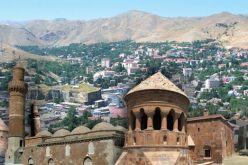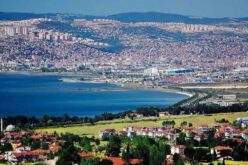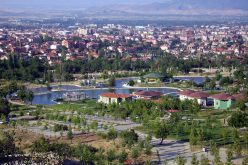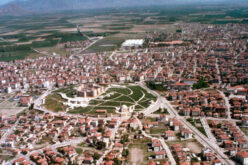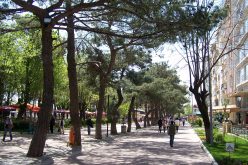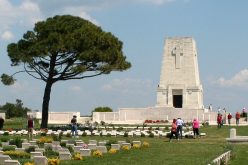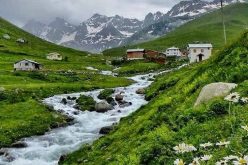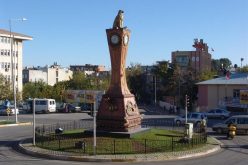Elazığ
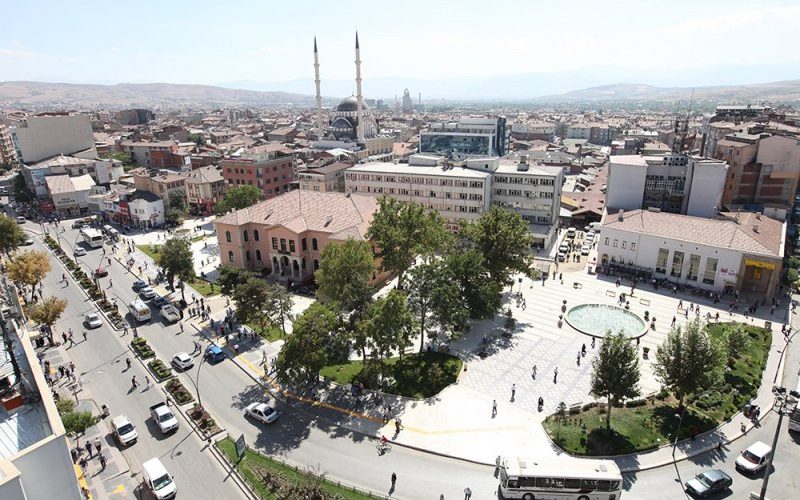
Elazig
Elazig is the most orderly, well-planned and beautiful city located in the Elazig province of Eastern Turkey. Situated on the fertile plain near a mountain (4350 feet high), this town lies at an altitude of 1020 meters above the sea level and is surrounded by vineyards and gardens.
The city is aesthetically magnificent, much of which is contributed by its location in the middle of wide expanse of plains, which are surrounded by purple hued mountains. There are also several lakes and rivers which add to its beauty. Elazig is endowed with immense natural resources. Abundant water supply from huge rivers like Euphrates (Firat) and the rich mineral deposit from underground, together contribute towards the rapid industrialization.
Agriculture is also prosperous owing to the fertile soil and water supply and different food items like grains, rice etc. are grown here. However, the main product of the region is the wine. Elazig also trades in crops and livestock. The Keban and Karakaya dams on the Euphrates River have given rise to several artificial lakes of which the Keban Lake is the largest and has important contributions in hydraulic power generation.
Culturally also, the region is quite developed. Harput, 5 km North of Elazig, used to be the cultural seat of the region. Many renowned scientists and artists were educated in Harput, which can be defined as the “real example of the city in fairy tales”. Elazig, with its long-standing Ottoman-Seljuk connection, also has curved its own cultural niche. The dance form of Elazig belongs to “Halay” style of dance. Cayda cira is a favorite dance for weddings and henna paintings, in which the dancers carry candles on the plates to represent its reflection on the water.
The city of Elazığ was founded among the skirts of the hill on which the historical Harput Castle was constructed. According to the present historical sources, the most ancient inhabitants of Harput was the Hurrian nation who settled in these aprts in 2000 B.C. Harput, and its surrounding region was part of the kingdom of Urartu at the period of its maximum extension. The ancient town and citadel called Kharput (Kharpert), which means “rocky fortress” in Armenian, was built by the first Armenian kings about five kilometers from modern Elazığ. However, very little written material about this city reached our day. It is possible that Harput stands on or is near the site of Carcathio-certa in Sophene, reached by Corbulo in A.D. 65. The early Muslim geographers knew it as Ḥiṣn Ziyād, but the Armenian name, Khartabirt or Kharbirt, whence Kharput and Harput, was generally adopted in time. William of Tyre wrote that Joscelin I, Count of Edessa (Jocelyn) of Courtenay, and King Baldwin II of Jerusalem were prisoners of the Amir Balak in Kharput’s castle and that they were rescued by their Armenian allies. William of Tyre calls the place Quart Piert or Pierre. Harput and its vicinity fell under Turkish control in the year 1085 as the outcome of the Manzikert battle on August 26, 1071. The Çubukoğulları, Artuqids, Aq Qoyuns and Ottomans had reigned in the region. Harput is still partly settled today, but due to its high elevation and lack of water it is slowly in the process of being abandoned, with most of its residents moving to Elazığ. Harput still has a few thousand inhabitants. Harput was the seat of a Syrian Orthodox bishop as early as the eleventh century, whose diocese was initially called Ḥiṣn Ziyād and later Harput. The last Syrian Orthodox bishop of Harput, Cyril Mansur, was murdered along with many of the town’s Christians during the Armenian Genocide and Assyrian Genocide of 1915. An Armenian Catholic diocese of Kharput was created in 1850.
Places To Visit ;
All of the significant architecture is actually in neighboring Harput. Harput Castle (harput translated as ‘Milk’ in turkish is ‘Süt’) is located at the southeast of the ancient city of Harput, at a position dominating the Elazığ plain. It is a known fact that this historical castle was build in the period of Urartu civilization. The castle was conquered by Romans, Byzantine and Arabians as stated in the historical documents. There are various legends rumored about the historical castle. According to one rumor, milk was used instead of water at the construction of the castle as the component of the plaster and therefore the castle is also called as Süt (milk) castle beside Harput Castle.
Ulu Cami (Great Mosque) The mosque was constructed by Artuklu Monarch Fahrettin Karaslan in 1156 – 1157 A.D in Harput. and is among the oldest and important structures of Anatolia.
Kurşunlu Cami (Leaded Mosque) The mosque is the most beautiful representative of Ottoman Period mosques in Harput.
Sara Hatun Cami (Lady Sara Mosque) The mosque was constructed by Sara Hatun, who was the mother of Akkoyunlu Monarch Bahadır Khan during the 15th century . The balcony of the mosque is among the most beautiful samples of stone craftsmanship. Although it was constructed as a külliye, only the mosque section is standing in the present day.
The Virgin Mary Church (Meryem Ana Kilisesi) is located at the left side of Harput Castle. It was constructed in 179 A.D . This church is also known as Kızıl Kilise (scarlet church), Süryani Church and Yakubi Church.
Cimşit Bath (Hamam) It is an Ottoman period structure, located adjacent to Sara Hatun Mosque.
Hazar Lake is located at 22 km. distance to Elazığ at the direction of Elazığ – Diyarbakır highway and is a tectonic lake stuck between Hazar Baba and Astar Mountains. The lake is the most important lake of Eastern and Southeastern Anatolia Regions with its original beaches. The lake is available for water sports and fishing. Two of the beaches of this lake had attained Blue Flag from the European Environmental Education Society. The lake reflects every shade of blue and green, displaying a different appearance at each hour of the day. Beside the education and relaxation camps of about approximately 25 public associations and societies around the perimeter of the lake, there are hotels, pensions, restaurants and daily promenade fields certified by the Ministry of Tourism and fishing houses established by the private sector in service for the visitors.
The population density around the lake increases during the summer seasons and as an outcome of the researches executed in 1990, a sunken ancient city was discovered inside the lake, attaining a different mystery aspect to the lake. This sunken ancient city was determined to begin around the Church Island of Hazar lake, extending to the Sivrice district. The scientific and archeological studies and researches concerning this ancient sunken city are in progress to determine the history and the reasons of sinking of this city. The lake has no transportation problems and therefore is an important natural wealth serving the inland and foreign tourism in all aspects.
Keban Dam Lake This lake is the biggest artificial lake of Turkey. The activities of fishing and fish production are executed in the Keban Dam Lake. There are numerous promenade places and fish houses at the shores of the Keban Dam Lake where the public can rest and enjoy. The surrounding area of the waterfall known as Çırçır Waterfall, which was formed during the formation of Keban Dam Lake was announced to be a natural park and promenade area.
Elazaig Archeology and Ethnography Museum Located on Firat University campus, has an impressive collection, particularly of pieces from the Uratian Kingdom, but labeling is mostly in Turkish and not very thorough. Visit neighboring Harput to see the ruined Uratian Castle and significant mosques. Dolmuses travel there from the town bus station or the stop on Birinci Harput Caddesi, just north of Gazi Caddesi, frequently for a minimal charge.
Open 9AM – 5PM, from Tuesday till Saturday, admission fee is 2 Turkish Liras Elazığ – Sivrice – Hazarbaba is located in the Hazarbaba Mountains in the Elazig district, this resort was only opened in 1999 and is still being improved.
Elazig is on the western side of the Eastern Anatolian region, and is well connected by road to all over the country. There are daily flights from Ankara, and three trains a week from Istanbul.
The Hazarbaba Ski Centre is 25km south of Elazig, and 6km from Sivrice, and there are private vehicles to the centre. Hazarbaba Mountain has an altitude of 2347m with an average snow depth of between 100 – 200cm. The season runs between December and March, and has a terrestrial climate. The resort has a ski lodge and a cafe. Ski equipment is available for hire, and there are plans to construct accommodation facilities. The T-bar was recently upgraded, and the ski run improved to cater for all levels of experience.
Write a Comment
Only registered users can comment.




